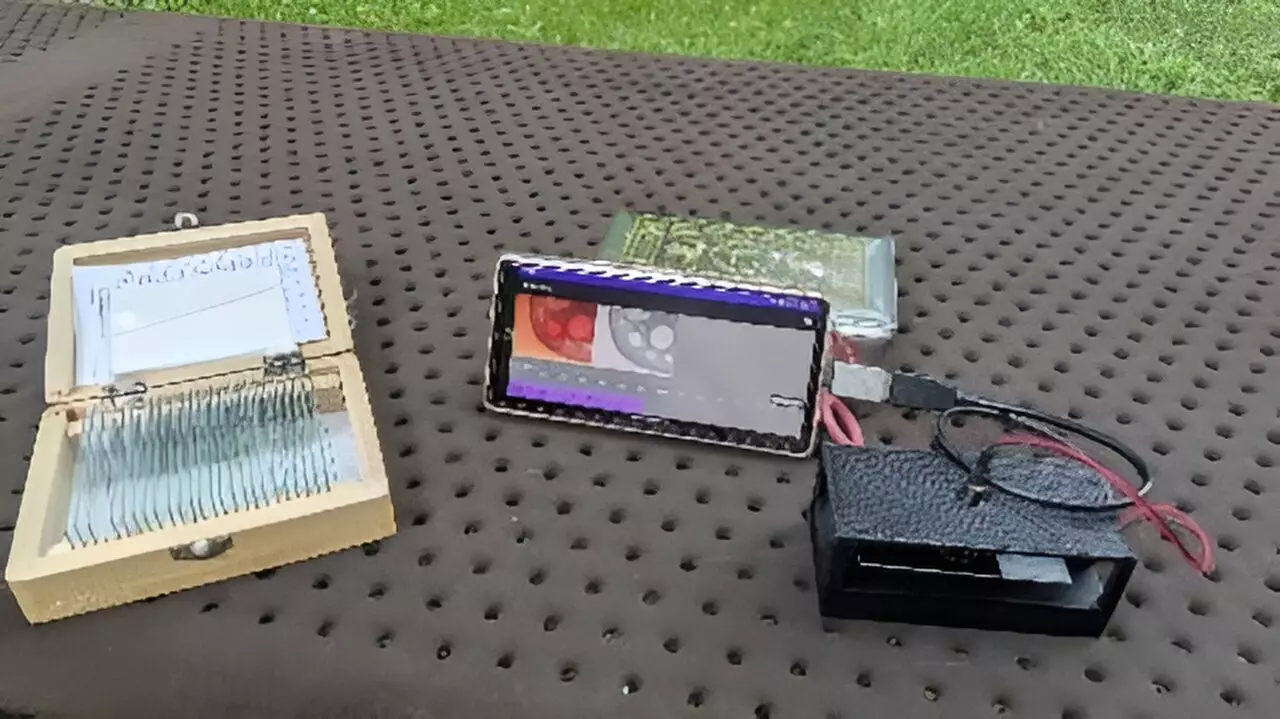In an era where technology grows increasingly vital across various domains, the advent of the smartphone-based digital holographic microscope heralds a groundbreaking shift in how we observe and measure microscopic structures. Developed by a forward-thinking team led by Yuki Nagahama from the Tokyo University of Agriculture and Technology, this innovation not only transforms the conventional use of microscopes but also democratizes access to sophisticated measurement tools. By harnessing existing smartphone technology, researchers can ease the burdens of complex and expensive optical systems, making 3D measurement capabilities more accessible and applicable across different sectors, particularly in education and healthcare.
Holography has historically required bulky equipment and extensive computational support, making it less conducive for real-world applications, especially in resource-limited settings. However, this new approach pivots entirely on the versatility and portability of smartphones. The innovation stands out not just for its low-cost design but for its potential to bridge the gap between advanced diagnostics and everyday usage, particularly in developing nations where such tools could radically advance medical diagnostics, such as in the early detection of diseases like sickle cell anemia.
Technological Advancements and User Experience
The technical prowess embedded within the design of the smartphone holographic microscope is equally impressive. Utilizing a simplified optical system fashioned through 3D printing technologies, coupled with smartphone-based computation, this device redefines what it means to be ‘portable’ in the realm of scientific equipment. The innovative use of band-limited double-step Fresnel diffraction for calculating diffraction patterns allows the microscope to manage data efficiently—crucial for real-time applications.
This speed and efficiency result in a user experience that is not merely functional but intuitive; the ability to interact with the holographic images through tactile gestures on the smartphone screen—like pinching to zoom—enriches the investigative process. Moreover, the researchers have committed to enhancing the quality of these images further through the integration of deep learning, which shows promise in filtering out unwanted artifacts that can hinder accurate observations.
Education and Research Reimagined
One fascinating realm where this smartphone microscope shines is in education. Imagine classrooms equipped with this technology, where students can observe living organisms in 3D, directly from the comfort of their classroom or even their homes. This would undoubtedly foster a more engaged learning environment, allowing students to dive deeper into biological sciences. Not only does it promote hands-on experiences, but it also opens pathways for remote learning, where students in underprivileged areas can gain access to technology previously deemed extravagant or unattainable.
Beyond educational settings, the portable design is set to revolutionize research methodologies, especially in field environments where traditional equipment would be cumbersome. Whether it’s in ecological studies focusing on microscopic life forms in diverse habitats or logistical challenges faced in clinical settings, having an affordable and lightweight digital holographic microscope can significantly enhance data collection and analysis.
Broader Implications for Healthcare
The healthcare applications of this innovation are perhaps the most profound, where rapid diagnostics can have life-saving implications. For instance, traditional diagnostic methods require sending samples to labs, which can be time-consuming and resource-intensive, particularly in regions lacking robust healthcare infrastructure. However, with this smartphone-based microscope, immediate analysis becomes feasible. Imagine medical professionals being able to conduct on-the-spot diagnostics and visualize critical health indicators swiftly, thus expediting treatment plans.
The scope of medical practice is set to expand significantly as practitioners gain tools that enhance their capability to visualize and understand patient conditions rapidly. Additionally, this technology could promote telemedicine, allowing remote consultations to become more precise as doctors can share real-time image data with specialists globally.
Final Thoughts on a Technological Future
The emergence of the smartphone-based digital holographic microscope represents not merely a technical achievement but a conceptual shift in how tools can be reimagined for greater inclusivity and impact. By distilling advanced technology into a user-friendly, affordable format, we open the gates to a new era of exploration and understanding in both science and medicine. The inherent flexibility, combined with significant implications for education and healthcare, suggests we are on the brink of revolutionary advancements that could reshape various fields. Advances like this are not merely about making existing tools better; they demonstrate how innovation can bridge the gap between knowledge and accessibility, potentially unlocking endless possibilities moving forward.

